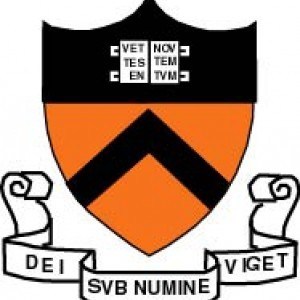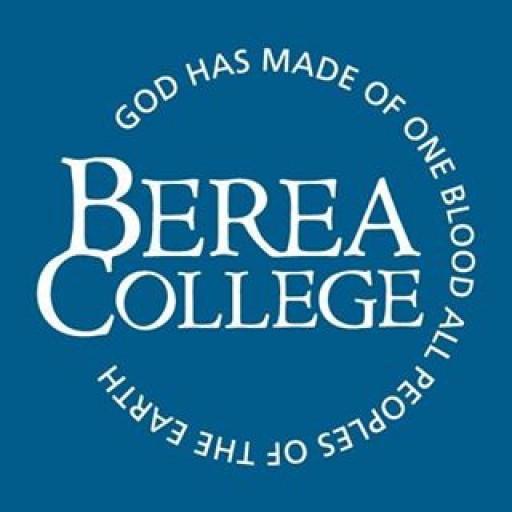Photos of university / #iubloomington
The Bachelor of Arts in Fashion Design at Indiana University Bloomington offers students a comprehensive education in the art and science of fashion creation. This program is designed to develop students' technical skills, creative vision, and understanding of the fashion industry’s cultural and commercial aspects. Throughout their studies, students engage in a variety of coursework, including fashion sketching, pattern making, textile analysis, apparel construction, and digital design techniques, equipping them with the necessary skills to translate ideas into tangible garments.
Students also explore the historical, cultural, and social influences that shape fashion trends and consumer behavior, fostering a well-rounded perspective essential for innovative design. The program emphasizes hands-on learning through studio courses, industry internships, and collaborative projects, promoting practical experience and networking opportunities with industry professionals. The curriculum integrates core subjects such as fashion merchandising, trend forecasting, sustainability in fashion, and entrepreneurship, preparing graduates for diverse career paths within the fashion industry.
Faculty members are accomplished professionals and scholars dedicated to mentoring students and encouraging experimentation and originality. Students have access to state-of-the-art facilities, including dedicated labs for pattern development, textile testing, and digital design. The program also offers opportunities for study abroad, participation in fashion shows, and exhibitions, allowing students to showcase their work and gain global insights.
Graduates of the Fashion Design program at Indiana University Bloomington are equipped to pursue careers as fashion designers, apparel technologists, fashion buyers, visual merchandisers, or entrepreneurs. The program's rigorous combination of creative and technical training, coupled with industry engagement, ensures students are prepared to excel in the dynamic and competitive world of fashion. Whether aiming to work in haute couture, sportswear, sustainable fashion, or retail management, students receive the education, mentorship, and resources necessary to realize their ambitions and make meaningful contributions to the fashion industry.
Students must complete at least 37 credit hours in Apparel Merchandising and Fashion Design, including the CASE Credit Hour and Residency Requirements and the following:
- Introductory Courses. Complete the following courses:
- SOAD-A 100 Pathways: Introduction to Art, Design and Merchandising
- AMID-F 202 Introductory Textile Science: Laboratory
- Core Courses. Complete the following courses:
- AMID-F 203 Materials for Fashion Design
- AMID-F 207 Fashion Studio I
- AMID-F 213 Fashion Design I: Research and Illustration
- AMID-F 217 Fashion Design II: Ideation
- AMID-F 303 Fashion Studio II
- AMID-F 305 Fashion Studio III
- AMID-F 340 History of Fashion
- AMID-F 417 Fashion Design III: Presentation and Analysis
- Advanced Courses. Complete a--c below:
- One (1) Experimental Fashion Studio course at the 300--400 level selected from:
- AMID-F 306 Experimental Fashion Studio: Tailoring
- AMID-F 325 Experimental Fashion Studio: Shape and Foundation
- AMID-F 326 Experimental Fashion Studio: Accessories
- AMID-F 328 Experimental Fashion Studio: Digital Applications
- AMID-F 408 Experimental Fashion Studio: Draping
- One (1) Dress Studies course at the 300--400 level selected from:
- AMID-F 301 Dress Studies: Topics in Cultural Analysis
- AMID-F 311 History of Dress
- AMID-F 352 Dress Studies: Aesthetics Analysis
- AMID-F 402 Collection Management for Historic Textiles and Costumes
- AMID-F 406 Dress Studies: Theory and Analysis
- AMID-F 411 Dress Studies: Behavioral Analysis
- AMID-F 485 Advanced Special Topics in Fashion Design
- One (1) additional course at the 300--400 level selected from:
- List 3a above (Experimental Fashion Studio)
- List 3b above (Dress Studies)
- AMID-C 380 Topical Issues in Comprehensive Design
- AMID-C 381 Topical Issues in Collaborative Design
- AMID-C 480 Special Problems in Comprehensive Design
- AMID-C 481 Intensive Seminar in Comprehensive Design
- One (1) Experimental Fashion Studio course at the 300--400 level selected from:
- Additional Requirements. Complete a--c below (these courses are not counted toward the hours required in the major):
- Grade of C– or higher in MATH-M 118, M119, or equivalent. Higher courses may be substituted.
- Six (6) credit hours in Fine Arts studio courses chosen from the following:
- Any FINA-F course
- Any FINA-S course
- SOAD-A 101 Creative Core: Color
- SOAD-A 111 Cross-Disciplinary Workshops
- Six (6) credit hours in Art History (ARTH) courses.
Note that course prerequisites will be strictly upheld.
We strongly recommend that students select courses in material culture, aesthetics, and dress offered by related departments such as Anthropology, Fine Arts, Folklore and Ethnomusicology, Theatre, Drama, and Contemporary Dance, and others to fulfill College of Arts and Sciences Breadth of Inquiry and Intensive Writing requirements.
The Fashion Design program at Indiana University Bloomington requires students to complete a comprehensive curriculum that combines core design principles, practical skills, theoretical knowledge, and industry-specific competencies. Students beginning the program should first fulfill foundational courses in drawing, color theory, and visual communication, enabling them to develop strong conceptual and technical skills essential for creating original fashion designs. As students advance, they are expected to participate in specialized coursework that covers apparel construction, textiles, pattern making, and digital design tools such as CAD software to prepare them for technical proficiency in fashion production.
In addition to coursework, students are encouraged to engage in hands-on projects, workshop experiences, and internships to gain real-world industry exposure. Many programs include a required internship or cooperative education component, allowing students to work with fashion houses, design firms, or related organizations to gain practical industry insights and develop professional networks. The program also emphasizes sustainability, ethical production practices, and global fashion trends, ensuring students are prepared for contemporary challenges in the fashion industry.
Students are required to complete a capstone project or portfolio presentation in their final year, showcasing their creative designs, technical skills, and conceptual understanding. The program may also include coursework in fashion marketing, merchandising, and entrepreneurship, broadening students' understanding of the business side of fashion. To qualify for graduation, students must accumulate a certain number of credits according to the university’s curriculum guidelines, typically including liberal arts electives alongside specialized design courses. Throughout the program, students are encouraged to participate in fashion shows, exhibitions, and competitions to build a professional portfolio and gain visibility. Assessment methods include project-based evaluations, critiques, portfolio reviews, and final exhibitions, all aimed at preparing students for successful careers in the dynamic field of fashion design.
Scholarships
- Global Education
- Global Engagement Scholarships
- Need-based scholarships
The Indiana University Bloomington offers a comprehensive program in Fashion Design through its Eskenazi School of Art, Architecture + Design. This program is designed to prepare students for careers in the dynamic and creative field of fashion, combining technical skills, artistic expression, and business knowledge. Students enrolled in the Fashion Design program have the opportunity to develop their abilities in designing, pattern making, textile selection, and apparel construction, supported by state-of-the-art facilities and experienced faculty members who are active professionals in the industry. The curriculum emphasizes both traditional techniques and innovative approaches, allowing students to explore sustainable fashion, digital design tools, and emerging trends.
Throughout the program, students engage in a variety of projects and collaborations that mimic real-world fashion industries, including runway shows, portfolio development, and internships with fashion companies. The program also encourages participation in exhibitions, competitions, and networking events to build industry connections. Graduates of the Fashion Design program at Indiana University Bloomington are well-equipped to pursue careers as fashion designers, apparel manufacturers, visual merchandisers, and entrepreneurs. They benefit from a strong alumni network and career services that support job placement and graduate education opportunities. Overall, it is a rigorous and creative program that combines hands-on learning with theoretical knowledge to produce versatile and innovative fashion professionals with a global perspective.




